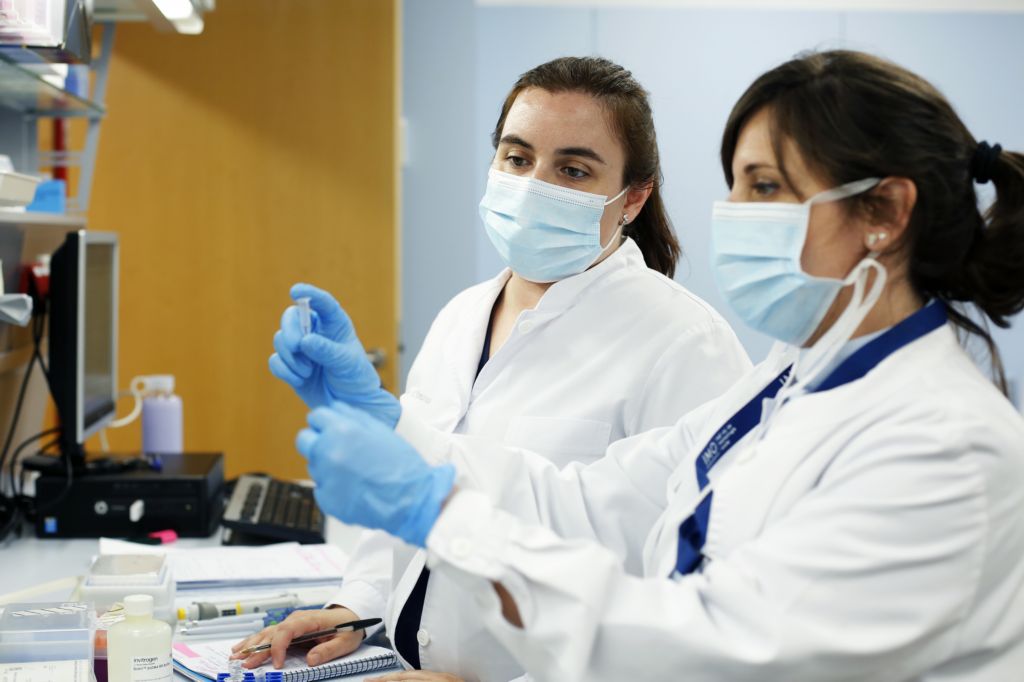
Genetic diagnosis to tackle inherited eye diseases
Patients with inherited eye diseases can now access our groundbreaking genetic diagnosis and counselling service in Spain
At Miranza, we have just launched a genetic diagnosis and counselling service for patients at our thirty or so centres throughout the country, a groundbreaking service in Spain that is offered by very few ophthalmology centres in the world to detect our inherited eye diseases. Thanks to the joint work of ophthalmologists and geneticists, the service complements clinical diagnosis through a personalised study in the lab, which makes it possible to identify the genetic alterations that trigger more than 45 inherited eye diseases.
In-house molecular biology lab
The genetic study can also be used to obtain a first diagnosis (without a previous clinical diagnosis), as well as to predict the prognosis or evolution of the disease, to know if it can be passed on to offspring, to know if there are unaffected carriers in the family who can transmit it and perhaps develop it in the future and to identify the altered gene in order to participate in studies or clinical trials based on gene and cell therapies.
To this end, we have our own molecular biology lab, which is integrated into the IMO Grupo Miranza facilities in Barcelona and offers this pioneering service to detect inherited eye diseases, which we are now extending to the entire network of the Group’s centres.
Working together to detect inherited eye diseases
Dr Esther Pomares, the coordinator of the Genetics Department and head of Basic Research at Miranza, points out that “many of the inherited eye diseases we treat are rare, affecting less than 1 in 2,000 people. Therefore, creating synergies between the centres of our group and establishing referral protocols allows us to access a greater number of patients, while offering them the opportunity to benefit from this service.”
What does genetic diagnosis provide?
Genetic diagnosis fills a gap that sometimes cannot be filled by clinical diagnosis. Some diseases, such as retinal dystrophies, have similar symptoms, so that it is necessary to determine the gene and mutation that cause it to give a specific name to the disease. This knowledge is key to being able to opt for future gene and cell therapies that are being developed and which will allow us to offer new solutions to inherited vision loss, which is in many cases still untreated.
Boosting genetic research to continue discovering inherited eye diseases
Given that there are still genes that have not yet been associated with certain inherited eye diseases and, therefore, are not included in the usual genetic analyses, Miranza’s molecular biology lab is also carrying out research projects aimed at identifying new genes responsible for these eye diseases. Thanks to this work, promoted by the IMO Foundation through Miranza’s R&D&I Department, in the field of retinal dystrophies, for instance, our team of geneticists has managed to increase the efficiency of genetic diagnosis by up to 80%.
In addition to retinal dystrophies (such as retinitis pigmentosa or Stargardt’s disease), other inherited eye diseases, included in the genetic diagnosis and counselling service of the Miranza clinics, are some forms of glaucoma, congenital cataract, congenital ptosis, ocular albinism or different syndromes with ocular involvement, among others.